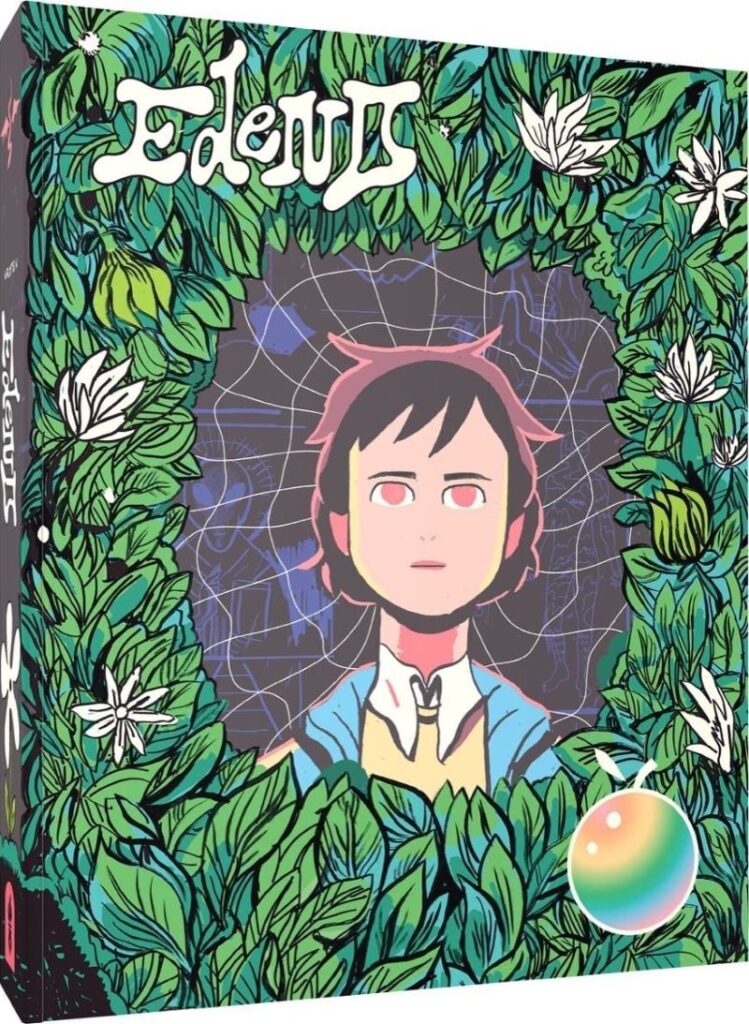
K. Wroten’s sophomore graphic novel is a sprawling, 452-page meditation on the bleak existence faced by the current twenty-something generation. With little upward mobility in finances, a crumbling environment, and seemingly no reason to go on, Wroten’s characters find solace in an idealized and immersive virtual reality game, Eden II. Unfortunately, even that virtual utopia is ripe for exploitation, as its owners gradually ramp up its monetization, squeezing every possible cent out of its addicted users.
Wroten’s theme of the appeal of life in virtual reality instead of the real world is a timeworn subject covered in properties such as Ready Player One, Snow Crash, and The Matrix. However, Wroten sets the bulk of the story in reality to keep the focus on the plight of the downtrodden characters. At its heart, this is a story about slackers just trying to get by, not an exploration of brave new worlds. It’s also a blistering critique of older and richer classes exploiting lower-class youth, from protagonist Ellis losing the rights of their principal creation of Eden II to their burnout community college teacher, to the teacher selling out to a monolithic corporation that turns Ellis’s escapist lark into ad-supported big business.
Wroten renders most of the book in black and white, using full color only for scenes occurring within the Eden II game world. This of course further highlights the contrast between the drab real world and the fantastic virtual game, driving home the appeal of escaping into cyberspace. Color primarily exists only in one roughly 30-page extended sequence near the midpoint of the book and 10 pages at the end, again because Wroten is focused on reality, not VR. The brushwork is loose with a great sense of immediacy, although that frenetic approach sacrifices detail for sheer page volume. Panels and page layouts are sparsely populated, generally leading to an overabundance of negative space. Even shading is hectic, with marker lines clearly evident in dark space fills that usually aren’t filled well. Overall, the art is somewhat messy, but lends a bit of handcrafted, DIY charm to the work.
Fantagraphics has added some visual pizazz to the book design with the inclusion of an eye-catching clear plastic slipcase sleeve, with additional full-color art augmenting the true cover art. The sleeve also adds protection to the paperback book, a decent trade-off for the lack of hardcover. It’s a weighty tome printed at a generous, roughly 9” x 11” size, especially in comparison to Wroten’s accomplished 6” x 9” debut graphic novel, Cannonball (2019, Uncivilized Books).
Wroten is still young, and it shows in the loose art and somewhat unfocused writing that drifts to ancillary characters and situations. Creativity is the main thing here, and Wroten demonstrates it in spades, delivering a monumental work that offers vital youth insight and social commentary in a swirling fever dream of artistic expression.